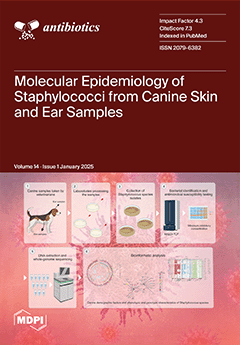Antimicrobial resistant (AMR)
Escherichia coli (
E. coli) isolated from animals may lead to antibiotic treatment failure and economic losses to farmers. The co-existence of antimicrobial resistant genes (ARGs) in the same isolate presents a major challenge for the prevention and control of infection in multidrug-resistant (MDR) Gram-negative organisms. There have been a lot of studies on the antibiotic resistance of
E. coli in livestock and poultry, but few of them have focused on clinical pathogens.
Objective: The aim of this study was to explore the genetic characteristics, co-occurrence, and correlations between ARGs of
E. coli isolated from the pathological tissues of livestock and poultry in Shandong Province, East China during 2015–2020.
Methods: A total of 158
E. coli strains were collected and subjected to antimicrobial susceptibility testing and sequencing by whole-genome Next Generation Sequencing (NGS).
Results: MDR strains accounted for 46.20% of the 158
E. coli strains with the highest resistant rate of ciprofloxacin (71.52%). In addition, strains with
blaNDM-5/mcr-1.1 and
mcr-1.1/mcr-3.24 were found in chickens, while three strains with
Tet(X4) were found in pigs. In addition, the most common serotypes detected were the O serotype (76/158) and H serotype (36/158). Moreover, seventy-one STs were found and the most common STs were ST10 (6.33%), ST155 (6.33%), and ST101 (5.69%). The genetic environment analysis of the phylogroups revealed that
E. coli belonging to phylogroup B1, phylogroup A, and phylogroup C constituted 39.87%, 27.85%, and 15.19%, respectively. Through the correlation analysis,
mcr genes were observed to have certain relationships with ARGS such as
blaTEM,
floR,
catA/B, and
oqx.
Conclusions: This study demonstrates the high prevalence and gene diversity of MDR
E. coli isolated from a clinic in Shandong Province, East China. We predicted the transmission risk of animal-borne
Tet(X4)-bearing and
mcr-harboring
E. coli to public health and provided insight into the relationship of co-existence or co-transfer between
mcr with ARGS. These relationships present a great challenge for the infection control of MDR Gram-negative organisms.
Full article






